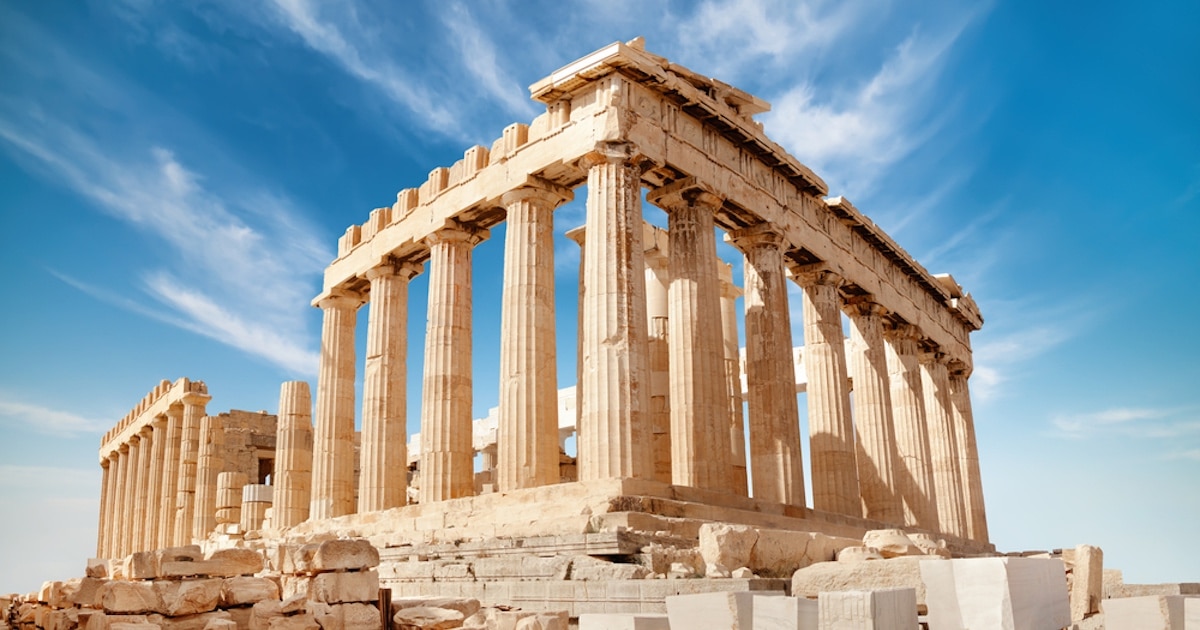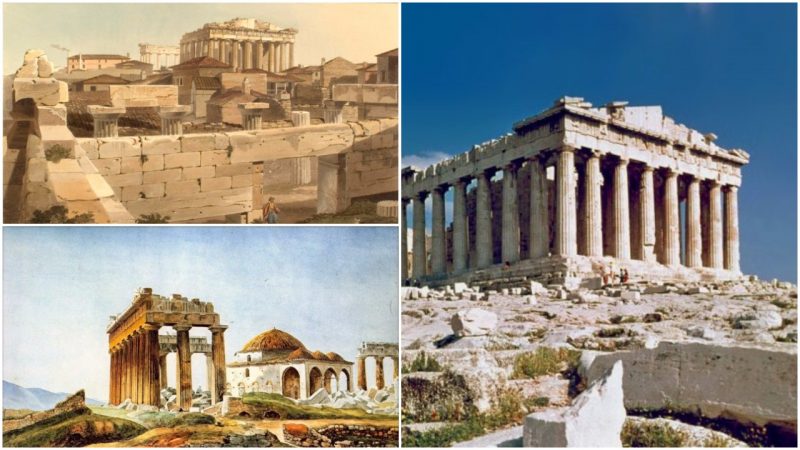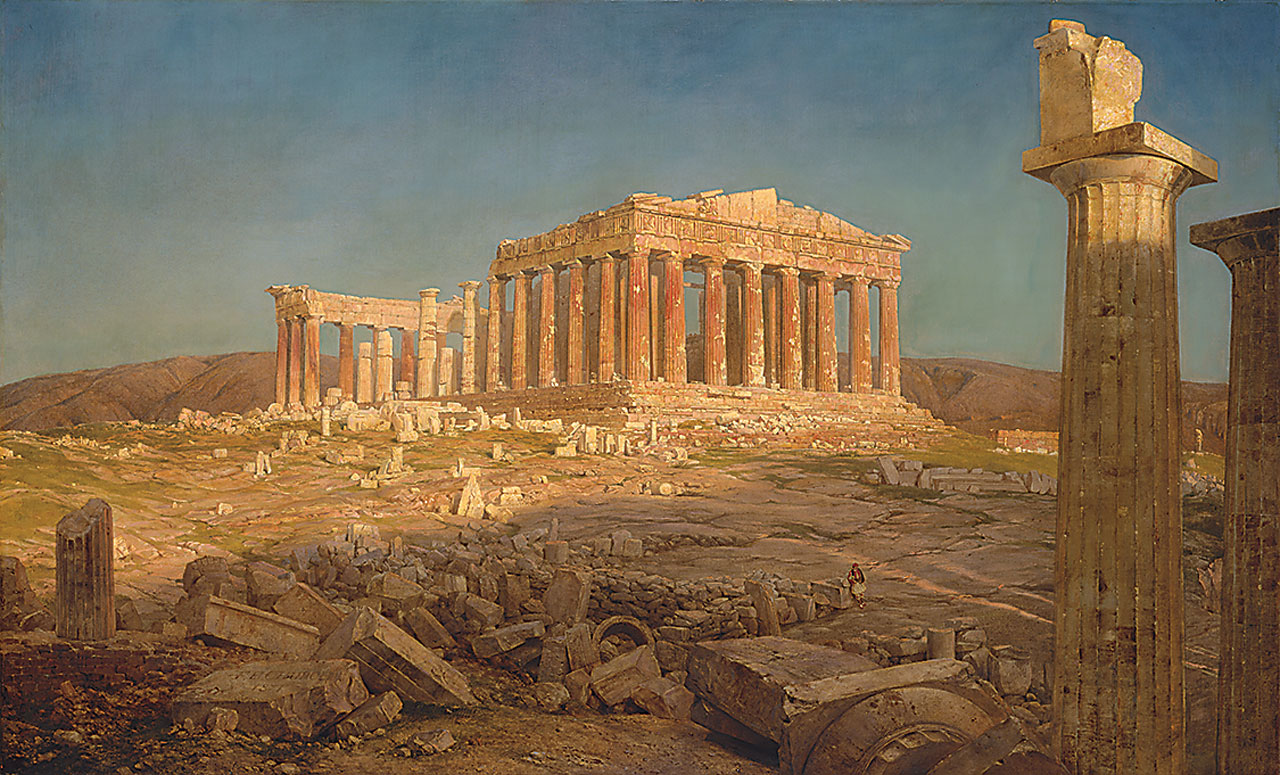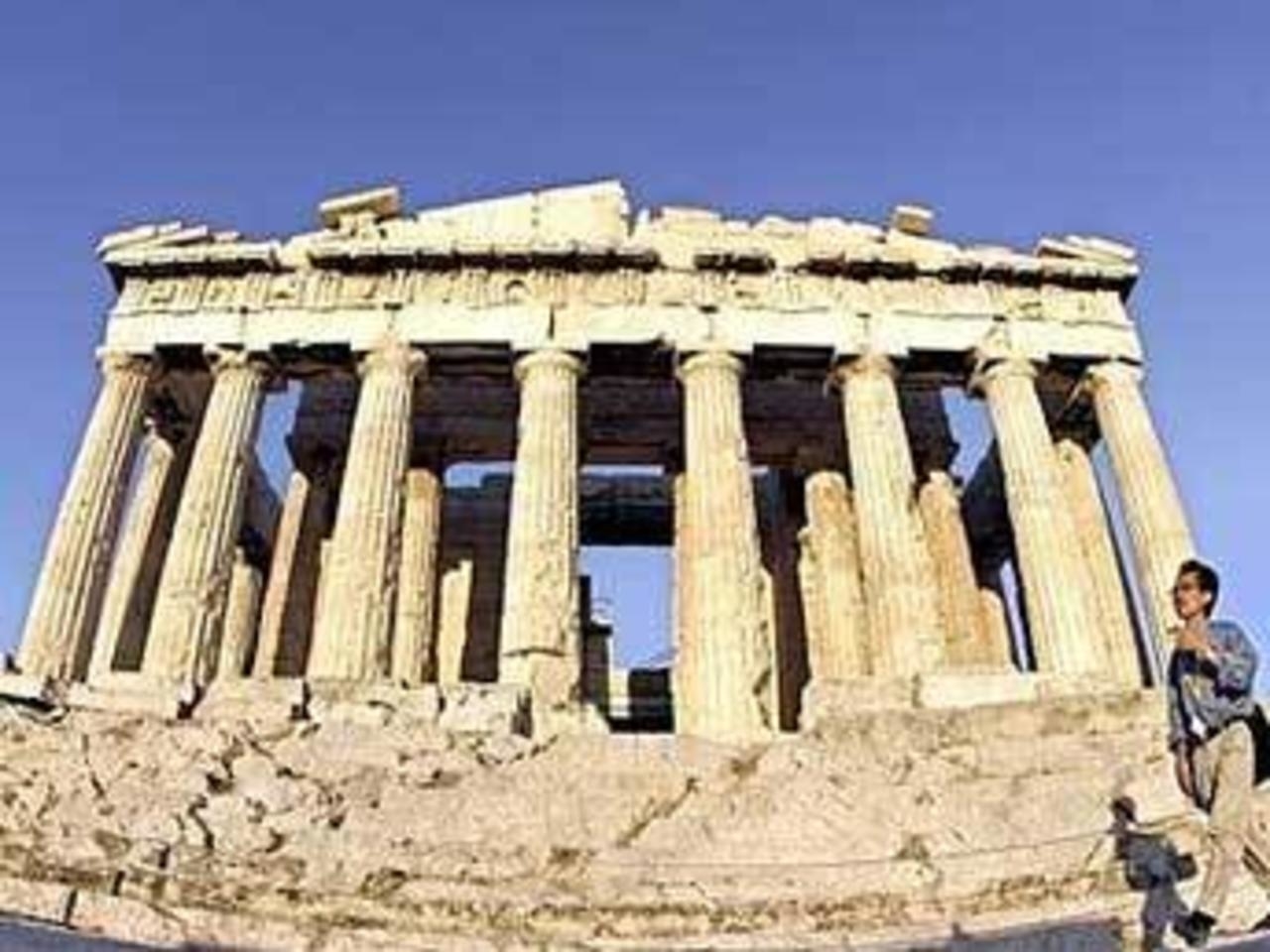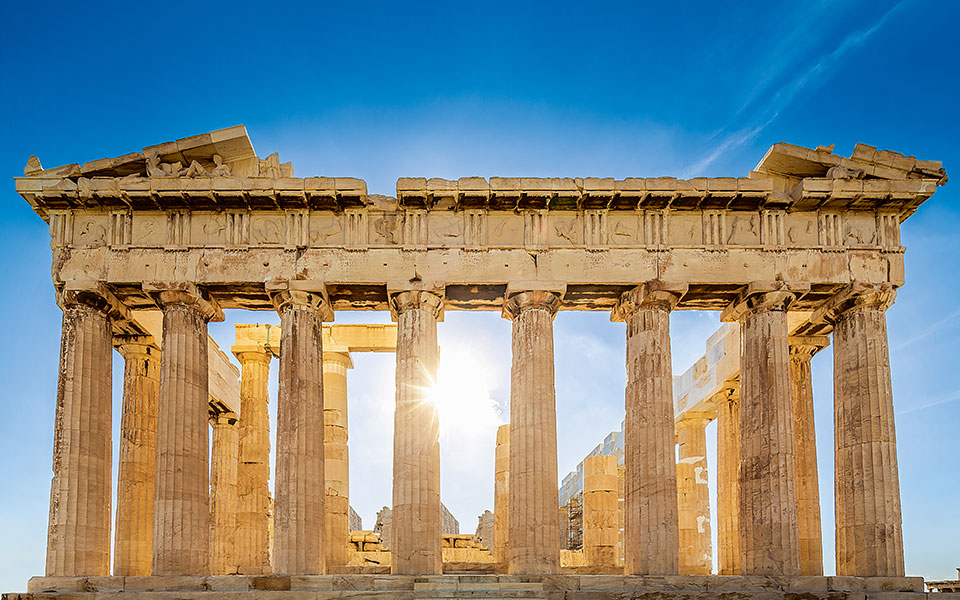Built over 2000 years ago, the Parthenon temple is dedicated to the Greek goddess Athena. Parthenon is one of the oldest temples in the world. It sits on the Acropolis hill, Greece ever since the mid-5th century.
The Parthenon which is one of the world’s greatest cultural monuments was built by Ictinus and Callicrates, instructed by Pericles. It took over a decade to build Parthenon. Let’s get into some interesting and amazing facts about the Parthenon!
The Parthenon – Here Are 10 Surprising Facts of the Temple
We are listing 10 surprising facts related to the great Parthenon temple.
1. Origin of the name Parthenon
The Parthenon temple took its name from the Greek word παρθενών “Parthenos” which implies “an epithet meaning Virgin” and also “unmarried women’s apartments”. There is a belief among Greeks that Parthenos is related specifically to one room inside the temple, however not sure exactly which room it is. As there are different theories, it is quite a possibility that maidens helped in getting this name who participated in sacrifices to please goddess, Athena.
2. Parthenon served to be part of Different Religions
The Parthenon temple went through many transformations from Greek Temple to Church to Mosque and now open museum during its long history. Until the 5th century AD, the temple was dedicated to the goddess Athena and was worshipped by Faithful of the Olympian Gods who considered her their patroness.
Around 590 AD, Christianity religion was expanding rapidly all over the world and they were on a rampage to conquer old gods. Followers of Christianity started renaming and building a church on the ruins of the ancient temple. The Parthenon transformed into a Christian church which was initially dedicated to Hagia Sophia and then later to Virgin Mary.
In the 1460s during the years of Ottoman rule, it was transformed into a mosque. At present, it serves as an ‘open’ museum where people from all walks of life irrespective of caste, creed, or religion are welcomed. Even though it was an adventurous journey of the temple since its inception it never lost its religious status.
3. There was Some other Temple before the Parthenon
The Parthenon temple site was constructed on top of a former old temple dedicated to Athena. Some historians refer to this as Pre-Parthenon or Old Parthenon. Approximately 2600 years ago in the 6th century BC, a new temple was built which was decorated with sculptures that are exhibited in the Acropolis Museum.
The older marble temple was under construction when it was destroyed in 480 BC by the Persians in the Persian war. It was left in ruins for more than 30 years and later Greeks decided to revive the site. The Parthenon which we currently see was completed in a record time of nine years when construction began in 447 BC. The decoration works of the temple were done between 438 BC to 432 BC
4. The Parthenon is Earthquake-Resistant
Ever wondered how on earth did this grand temple survived for more than 2 millennia on top of a very seismogenic terrain? The secret behind this is The Parthenon is earthquake-resistant. According to research by Archeologists, The Parthenon has triple anti-seismic shielding even though the structure has no foundation.
5. A portion of its Greatest Treasures are in London’s British Museum
Thomas Bruce, Scottish nobleman, 7th Earl of Elgin removed 50% of the remaining Parthenon’s surviving sculptures when Ottoman Empire was ruling over Greece. He started transporting these sculptures by sea route to Britain by claiming that he had permission from the Ottomans. These can now be found in the British Museum. The Parthenon Marbles also known as Elgin Marbles are one of the finest examples of Classical Greek sculpture. For almost more than 30 years now, The Greek government has been campaigning for the British Museum to return the sculptures to Greece.
6. You have a proper Replica of the Parthenon in the United States
One need not travel all the way to Greece to witness the amazing Parthenon. There is a full-scale replica with meticulous detail located in Centennial Park, in Nashville, Tennessee. This replica was constructed in the year 1897 as part of the Tennessee Centennial Exposition. William Crawford Smith is the architect of the Parthenon’s replica. The decorations were painted in the same colors as the original Parthenon and plaster replicas are direct cast from the originals.
7. The Parthenon was actually believed to be Quite Colorful
Based on the data collected by some historians and archaeologists, it is quite evident that Parthenon was indeed quite colorful unlike what we see today in just white color. A few years back when the sculptures during systematic excavation of ancient Greek sites there were visible traces of colorful surfaces. There is an ongoing debate between learned art historians whether it was white or colorful based on the findings. In fact one German archaeologist with help of high-end cameras, high-intensity light bulbs, and ultraviolet light proved that all Parthenon sculptures were painted.
8. Parthenon was a Jewel in the Crown of Greek Architecture
The Parthenon temple is one of the most iconic buildings in the world and is considered the finest example of Greek architecture. The Parthenon is a peripteral octastyle Doric temple that boasts exemplary architectural features. The temple has eight columns at either end (octastyle) while seventeen columns exist on the sides. On the whole, the Parthenon has been built by including 46 outer columns and 23 inner columns. Each column comprises 20 flutes. Large overlapping marble tiles known as imbrices and tegulae were used to cover the roof.
9. A huge portion of the site was destroyed during the Great Turkish War
The Parthenon was devastated during the Great Turkish war between the Ottoman Empire and an alliance known as the Holy League. Ottomans have used the site to dump their ammunition dump during the war. The idea of dumping the ammunition turned out to be disastrous as the Venetians bombed the area which caused the ammunition to explode and thereby causing huge damage to the Parthenon and its sculptures.
10. The construction cost of The Parthenon is Equivalent to 469 Warships
Can you imagine how much money did it cost to construct the great Parthenon whose columns are built of marble while the base is made of limestone! “The Parthenon construction cost the Athenian treasury 469 silver talents. While it is almost impossible to create a modern equivalent for this amount of money, it might be useful to look at some facts. One talent was the cost to build one trireme, the most advanced warship of the era”, according to the website ancient-greece.org.
Hope you liked the article about the great Parthenon temple and its amazing facts!

